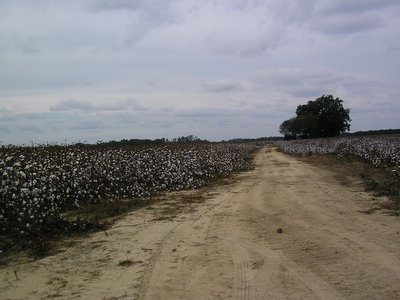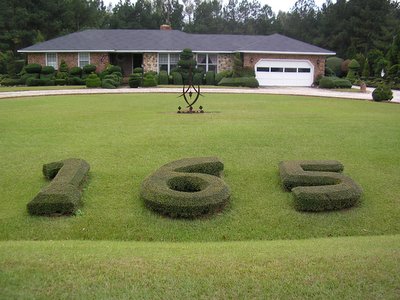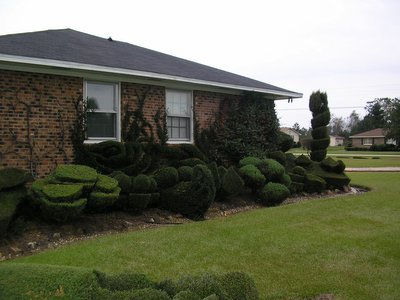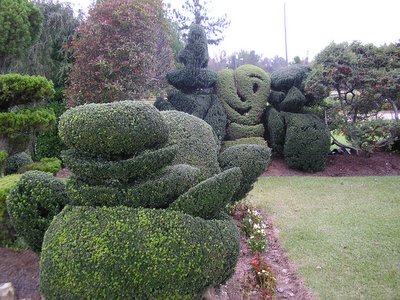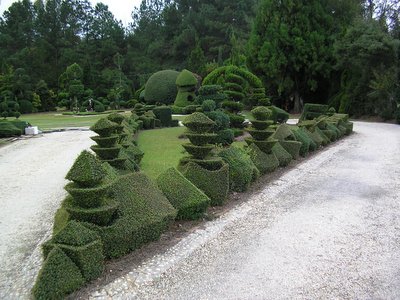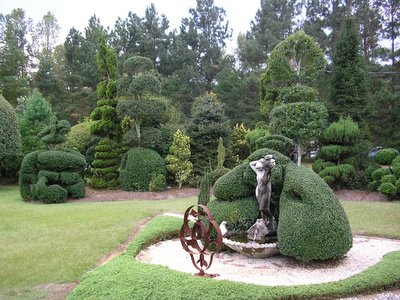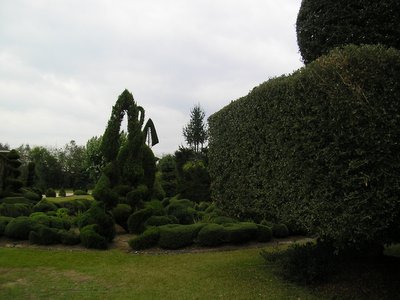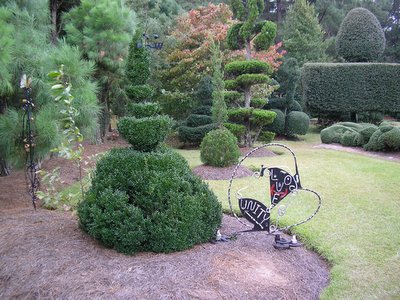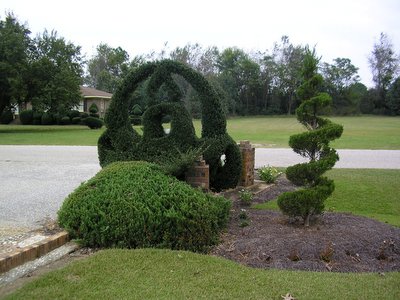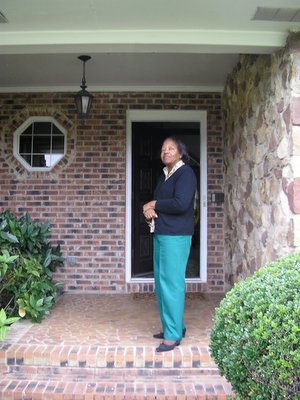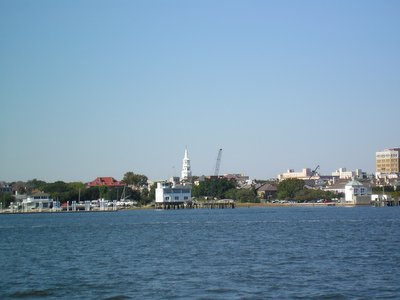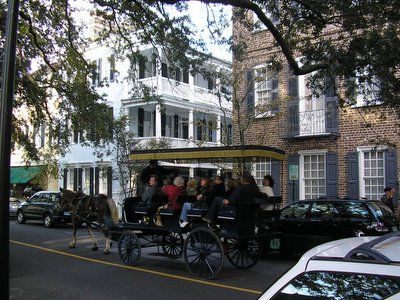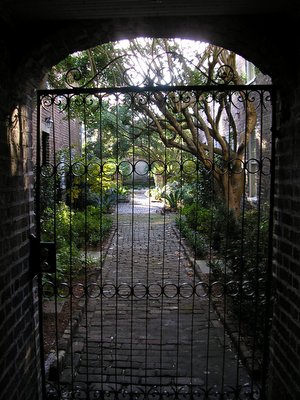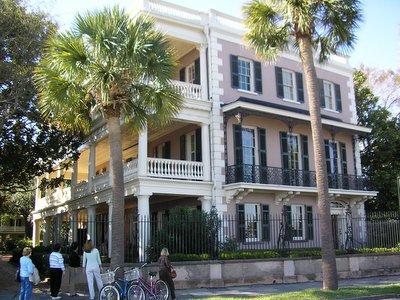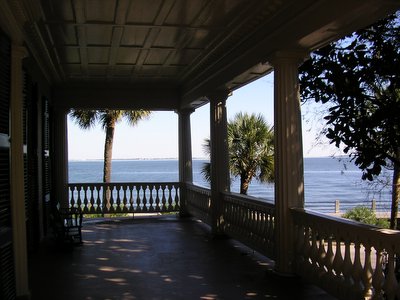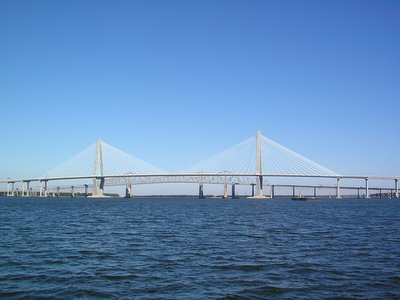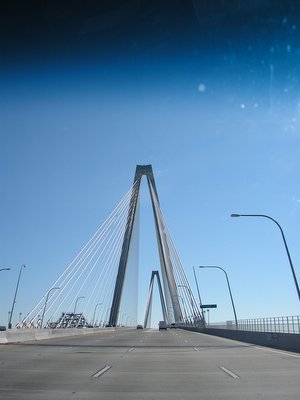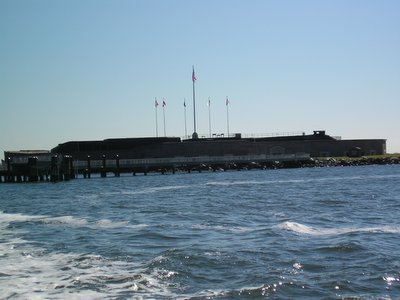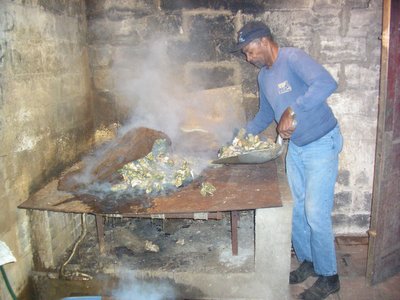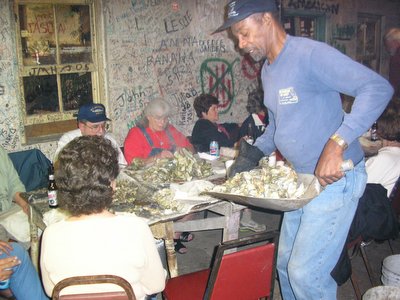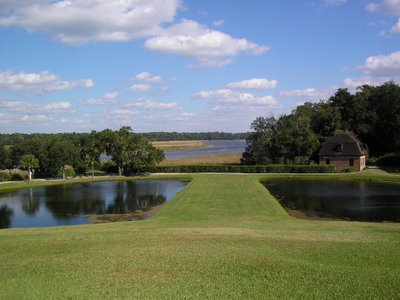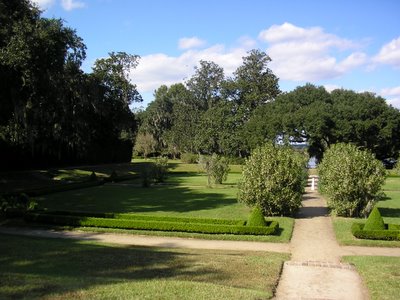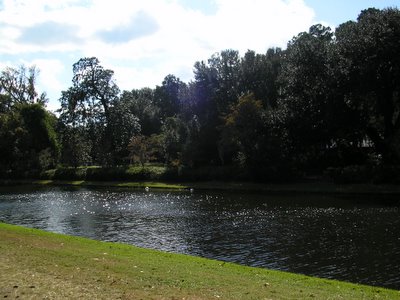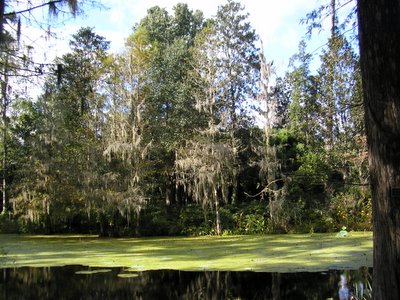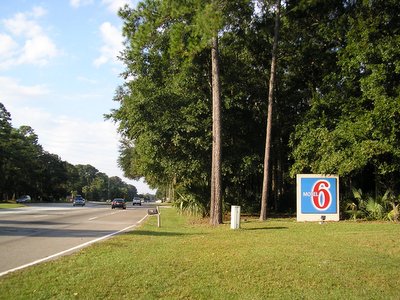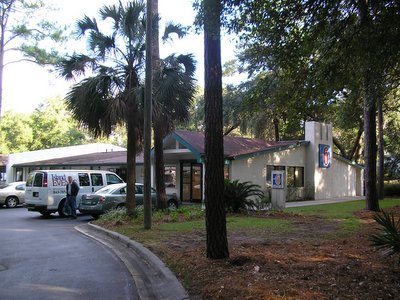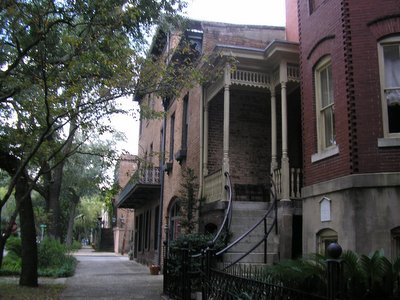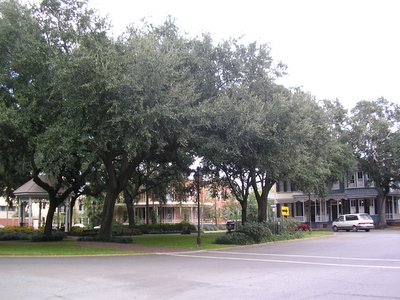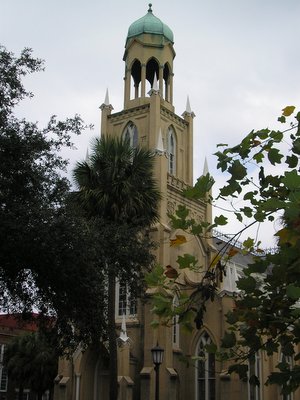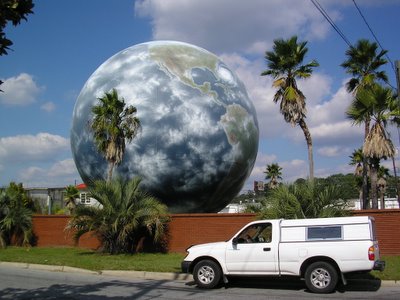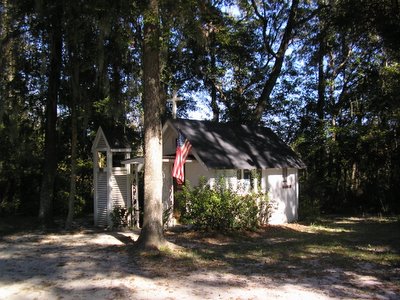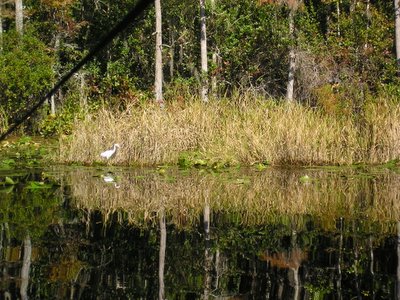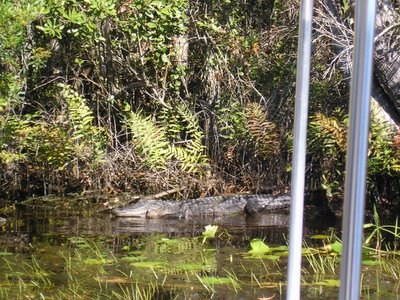EPISODE 11: GULF COAST
There will be fewer pictures in this episode and more words, maybe a little more like an old fashioned CliffNotes. The main reason for fewer pictures is that I decided not to take pictures of the widespread devastation caused by Hurricane Katrina. Although I took pictures of disaster areas in India, that seemed to be part of my work. On this recreational trip I could not bring myself to take pictures of all this human misery here at home, but I will try to describe it in words a little later.
But before I get to Mississippi and Louisiana I will say a little about Florida and Alabama. I went to Florida to make it my forty-fifth state and to say that I saw the Gulf Stream waters. Although not on this trip, I have been from California to the New York Island, from the Redwood forest but not to the Gulf Stream waters. I have been thinking of and singing that song a lot on this trip because I have seen a lot of God Bless America signs and that song was Woody Guthrie’s antidote to the song God Bless America. Here are a couple of little known versus from Woody’s song:
As I was walkin' - I saw a sign there
And that sign said - no tress passin'
But on the other side .... it didn't say nothin!
Now that side was made for you and me!
In the squares of the city - In the shadow of the steeple
Near the relief office - I see my people
And some are grumblin' and some are wonderin'
If this land's still made for you and me.
Back to the Gulf Stream waters - here is a picture of those waters and a couple of houses in Florida that show the result of an earlier hurricane (probably Dennis or Ivan last year). You can see how they are constructed on stilts, which is typical here to keep living spaces above flood stage.
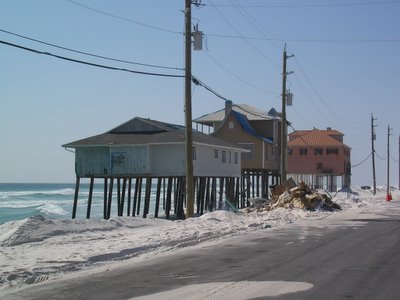
Florida Gulf Coast
Around Panama City Beach in Florida I started seeing some very strange high-rise structures that turn their back on the land and face the sea. These are huge modern buildings, over twenty stories high. They have almost no windows on their land-facing side and all their windows face the sea - but the effect is to wall off the shoreline. I thought I was in Las Vegas since they seemed so new and large and expensive. They are all condos and will clearly withstand hurricanes. Some of these new fancy high-rises are right next to typical beach vacation areas with swim suit shops, miniature golf, cotton candy, and other such activities.
I tried to drive into Pensacola along a causeway but Hurricane Ivan had washed it out last year. And there was still a lot of devastation visible, mainly roofs that had been torn off buildings.
One thing I noticed on the Gulf Coast was that there are many new and very large and expensive bridges either leading to islands or along the shore going over waterways. It seems that these are in response to past damage by hurricanes and are designed to withstand future damage, but I don’t know that for sure. And I don’t know who funded their construction. Another thing I noticed along the gulf coast all the way to Louisiana was that there are an incredible number of Hooters here (the restaurants).
I drove along the shoreline into Alabama (state number forty-six) and then into Mobile where I stayed in a little trailer park. I thought about heading north to some Civil
Rights sites, such as Selma and Montgomery where they have just dedicated a new memorial designed my Maya Lin. I also always wanted to see Tuscaloosa, mainly because of the Marx Brothers’ joke that followed the “I shot an elephant in my pajamas” line in Animal Crackers. (Punch lines: what he was doing in my pajamas I’ll never know, and it is easier to remove the ivory from elephants in Alabama because their tusks are looser). But I decided to leave that to another trip.
I did ponder, however, that it seemed that Mobile was not one of the Alabama cities that featured in the Civil Rights movement like Selma, Montgomery, and Birmingham (I will never forget that most famous photo of the sixties in Birmingham where the firemen spraying water on the demonstrators had those big letters BFD on their back). One of the few really integrated restaurants I saw on this trip was a Mobile oyster bar that had both black and white customers and staff.
Hank Aaron was from Mobile and their baseball park is named after him. Another thing about Mobile -- I kept on thinking that they really feature movable items here: mobile furniture, mobile homes, mobile hardware, mobile food – then I figured it out. I also saw the first effects of Katrina here when I tried to find a wireless Internet place at a marina but they were hit by the hurricane and the wireless antennas had not been fixed yet.
I took the interstate into Mississippi (number forty-seven) and thought of the old Phil Ochs song from the civil rights era: “Here's to the land you've torn out the heart of,
Mississippi find yourself another country to be part of!” I started to drive on Highway 90 along the coast and in Pascagoula at the eastern end of the state I began to see the results of Katrina. Big tall signs and billboards had been destroyed. Highway 90 is not drivable yet into Biloxi so I took the branch of the interstate and saw a sign that said “residents and relief workers only.” Well, I was already there so I thought I would check it out and what I saw in Biloxi was truly shocking. Whole neighborhoods were devastated with houses off their foundations and roofs blown off. The trees affected me as much as anything else especially when huge oak trees with massive root balls are just ripped out of the ground and thrown against the houses.
Since Highway 90 along the coast is not passable it takes hours to go along another road further inland so I gave up and headed back to the interstate to go into New Orleans. I found out at the Louisiana welcome center that New Orleans has been reopened and they also told me about a volunteer opportunity in Slidell about twenty-five miles north of New Orleans. A church group has set up operations there with volunteers from all over the country; they have established a compound in a family’s large yard. I stayed two nights in the compound and worked one day cleaning out a woman’s house. The only picture I took was of this woman’s house and the junk we removed. It was really hard emotionally removing her personal possessions. We had to take down a lot of the plaster and paneling that had been damaged and was moldy. It was a real mess and when the fridge opened by mistake as we wheeled it out the door the smell was horrendous. Here is the house:
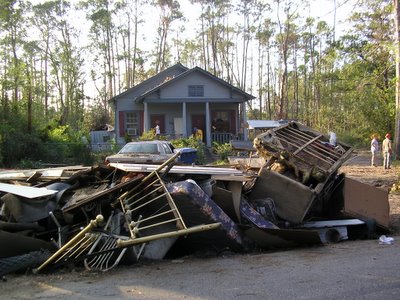
Ms. Dorris' house in Slidell
In the little town along Lake Pontchartrain north of New Orleans every structure was massively affected. In New Orleans itself there was a lot of damage but most neighborhoods seem to been in pretty good shape. However, some neighborhoods were obviously under water for a long time. In these areas, mostly poorer neighborhoods to begin with, many cars have been abandoned with dirt on them. And whole neighborhoods are empty. Nobody is around. It is like after a nuclear attack - remember that Burgess Meredith Twilight Zone episode? These areas are just abandoned. It is so disorienting with the traffic signals not working and light poles bent over. And all the stores and gas stations are closed. There are huge piles of trash at the curbs and there is a smell of dust and mold. I don’t see how anything can really be done except bulldoze whole neighborhoods.
It is just exceedingly sad. I never saw anything like that in India - possibly because much of the housing in India seems like a disaster area anyway. That is an interesting point - the way we use the term “disaster area”, to describe a teenager's room, for example. I guess this is the first real disaster area in the US I have ever seen. Also, while people seem to be determined to rebuild I think everybody is in a state of shock still.
One more thing about the Church group I worked with. While there was not much overt religion, and they welcomed volunteers no matter what their religion or denomination, they did ask that there be no drinking or profanity at their compound or at a work site. I hope I did not offend anyone but a couple of times I just could not help it. In our van on our way to the work site we passed by a mobile home that was just cut in two by a huge fallen tree. I just could not help myself and said “Jesus”. The other time was when I was wheeling a load of debris down a door that we had placed on the front steps as a ramp for the wheel barrow I let the barrow fall over on the way down and let out a “Damn”.
While there was no drinking at the compound this was not so away from there. About twelve of us went to a Mexican restaurant, mostly young people in their twenties although there were a couple of us older folks. The restaurant had a little routine that I think was more Louisiana than Mexican. One of the waiters takes a customer and bends his head back with a towel wrapped around his neck and pours Tequila into his mouth using the little dripper used for measuring liquor. While he is doing this he blows a whistle. The idea is to see how long the person can keep on drinking. John, one of our young guys who drives a little John Deer fork lift in the tree removal work, did this twice for a long, long time. While his head was bent back and he was guzzling Tequila you could see on his shirt: “Hilltop Rescue - A Church of Christ Ministry”. Then the waiter picked him up on his shoulders, and John is a tall guy, and whirled him around for a couple of minutes. Four guys from another table who also participated in this tequila routine came over and congratulated John; and I told him I would but him in my blog. I don’t know how much tequila he actually imbibed but he seemed OK the next morning.
That was about all the Laissez les bontemps roulez I experienced in New Orleans because I did not feel much like partying there yet. But I did do a little touristy stuff. I walked along the Moon Walk, named after President Carter’s cabinet member Moon Landrieu and took this picture. It is a long way from the source which I spit into up in Minnesota. Do you think it is here yet?
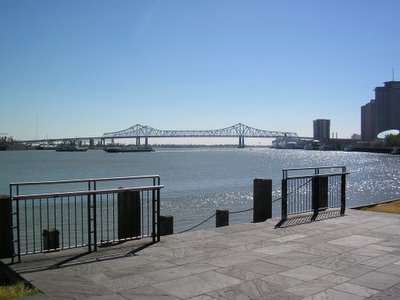
New Orleans Bridge
And here is my obligatory picture of the French quarter where about half of the restaurants and other businesses are not yet reopened.
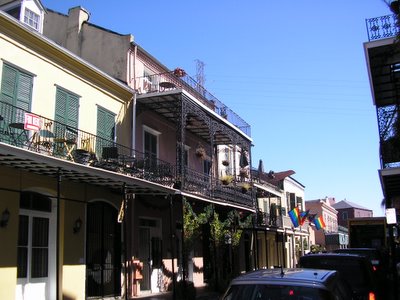
French One-eigth
One of my objectives, of course, was the D-day Museum but, unfortunately, it is not yet reopened. It is located here in New Orleans because this is where the landing craft were built and Eisenhower credited them for the invasion’s success. And Stephen Ambrose was instrumental in establishing the museum here. (The highway leading into New Orleans from Mississippi is named after him now.) The museum survived Katrina pretty well and all of their artifacts are undamaged, although there was some damage and looting of the gift shop. I walked by the museum’s entrance and a guy who runs the gift shop saw me through the glass door and came out to tell me they were still closed. I told him I was a charter member and why I was involved. He asked me to come in for just a minute and introduced me to a man who was in the 82nd Airborne Division who has been back to Normandy many times and knows some of the French friends I have made there. He said that parts of New Orleans are worse than some of the war zones he was in. In any case, here is a picture of the museum that I did not get to tour.
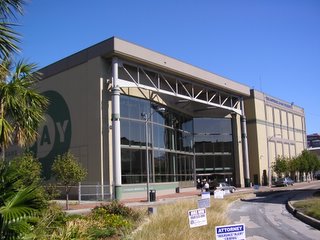
D-Day Museum
After New Orleans I headed west to Cajun country and I really liked what I saw. As is evident, much of this trip has consisted of types of pilgrimages and my visit to Avery Island was certainly of that nature. That is where they make Tabasco Sauce and this was almost as memorable for me as visiting the Guinness factory in Dublin.
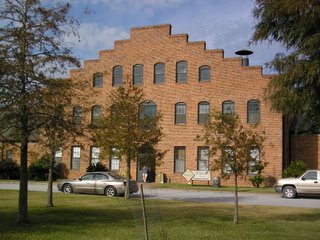
Tobasco factory
I had heard about a big restaurant in Lafayette that serves Cajun food and plays Cajun music so I asked someone at a gas station how to get to Prejean. But I pronounced it Pre (like “before”) Gene. Of course it is pronounced “PrayJhan”. Stupid Yankee again. I guess this should not be a surprise for someone who in High School got a D in French 4, repeated it in Summer School and got another D. Although in another town I was trying to find Bridge Street was able to do so by reading the “Rue Pont” on the street sign.
The next morning I took some back dirt roads along the Atchafalaya River and on the levee itself. I said before that it didn’t get any better than driving over country roads in West Virginia listening to Country Western music. Well, I take that back. It does not get any better than driving on dirt roads and levees in the bayou county listing to Cajun and Zydeco music on the radio. And the dead armadillos on the road add to the ambiance.
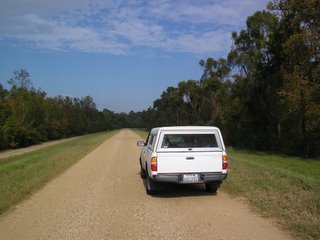
Not a Chevy, still dry
One of my main reasons for exploring the Atchafalaya basin is because of the account I read by John McPhee (The Control of Nature) on the Corps of Engineers’ huge effort to keep the Mississippi River from changing course as it has done many times in the past. The river WANTS to go down the Atchafalaya but New Orleans and Baton Rouge would not like that. Here is a picture of the Corps’ locks that connect the Mississippi to the Atchafalaya and it’s control channel up river from the locks where it meters how much water can leave the Mississippi.
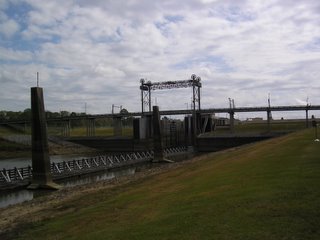
Lox
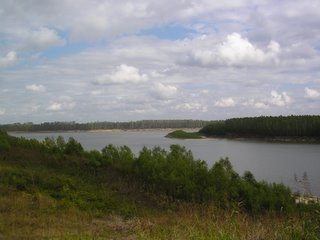
Where Mississippi wants to go

Corps control structure
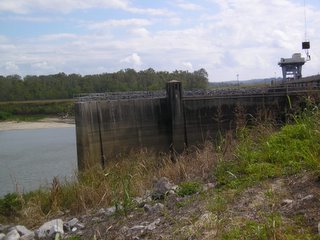
Control structure 2
Not far up river from here and across the Mississippi is the town of Natchez. I am getting a little touristed-out by now but I wanted to see the town where Maverick hung out (“From Natchez to New Orleans, Living on Jacks and Queens”).
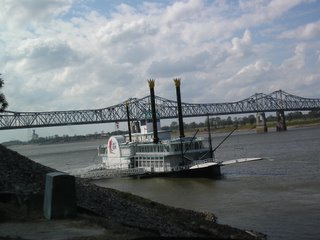
Natchez
I happened to come across a chili cook-off in Natchez and for $5 I ended up sampling 14 entries. I could barely make it back across the Mississippi where I wanted to check out the town of Ferriday, Louisiana where Jerry Lee Lewis comes from. There is a sign to his old house, which is right next to a little one-lane drive-through market that looks like a barn or garage. People just drive their cars into it and ask for groceries. The guy who runs it looks like he could be Jerry Lee’s brother but he told me that one must call ahead so somebody could open up the house. So I was not able to go inside to see the house, or to find out where one finds thirteen year old cousins, but here is a picture of the outside of the house.
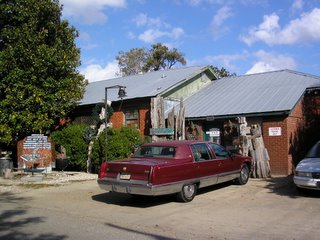
Great Balls of Fire
